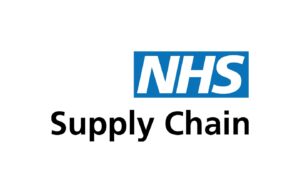It all started with surgical skin disinfectant.
In the latter part of my training and fellowship, I used Product A. As a consultant in my first post I also used Product A. But when I got to Worcester they had Product B on the shelf. I did not like Product B…..
At this point I had a decision to make. Should I make this the hill upon which to make stand and push for change, or just suck it up and keep using Product B, even though I loathed it.
Well I reviewed some department data and felt that I should push for change which brought me to the next decision. Do I pursue change with the vigour of generations gone by and just issue some demands to someone in management, or do I build a solid case for change.
If i’ve learnt anything over the past few years of facilitating some incredible trainees is that the only way to push for any meaningful change is to work within whatever system you exist. I was fortunate that Worcester had more proactivity in facilitating change than some others!
So where did I start ? Well Sun Tzu makes it clear that knowing what I wanted was good but I needed to know what I was up against. Although Product B was easy enough to understand, nothing happens within the NHS without process. So it was important to acknowledge this process!
“If you know the enemy and know yourself, you need not fear the result of a hundred battles. If you know yourself but not the enemy, for every victory gained you will also suffer a defeat. If you know neither the enemy nor yourself, you will succumb in every battle.
Speaking to a number of colleagues, most shared their experience of the ‘good ol’ days’ noting that infection rates using a traditional Product C were incredibly low. Overall not many were overly enamoured with Product B and so long as we had something appropriate were happy for any changes to occur with appropriate consultation.
Tracking the history of the initial change to Product B and it is clear that the rationale was good. The National Institute of Clinical Excellence (NICE) issued guidance emphasising that the preferred skin disinfectant for surgical procedures was 2% Chlorhexidine in 70% Isopropyl Alcohol (IPA).
Product B is 2% Chlorhexidine in 70% Isopropyl Alcohol (IPA), and has the advantage of being available in single use applicators which certainly made out infection prevention team happy. From a patient safety perspective the use of Product B negated some potential risk of harm or misuse by preventing any confusion with other products. The biggest negatives (in my view) were the fact that the applicators were not good for anything other than a regular shaped area (e.g. abdomen, limited areas) and cost. Using Product B applicators to prepare all the areas for lower limb joint replacement surgery (and I will admit that I prepare the whole limb including the foot) was a challenge. Getting into all the skin creases and folds just wasn’t as convincing with these applicators. I also had a to use several applicators so the costs per patient were quite significant.
Product B
Currently Used- Single Use
- Chlorhexidine 2% with 70% IPA
- £6-8 per unit
- Difficult use in orthopaedics
Product A
Proposed Product- Bottle with optional additive dye in bottle cap
- Chlorhexidine 2% with 70% IPA
- £2.50/bottle
- Requires additional consumables to apply (approx £1/bottle)

At this point I entered into a conversation with our procurement team who were open to the idea of change and talked me through the process of NHS supply chain and procurement policies. The reason I started here was because I needed to know that change would be possible. In the NHS, if items that we want are in the procurement catalogue then switching products is relatively straightforward.
I was fortunate enough to find Product A in the catalogue and confirmed that it was also the same composition (2% Chlorhexidine and 70% IPA), came in 120ml bottles with optional dye in the lid and most importantly was only £2.50 a bottle!
The next step was stakeholder engagement. I pitched the idea at our departmental governance meeting, and with all my consultant colleagues on board we could now proceed and with drafting a case. The interesting and most salient points here was the number of groups who needed to get involved.

- Infection prevention – wanted to ensure that the disinfectent met national guidance and queried what the advantage of Product A was over Product B. Ultimately, they acknowledged that the concerns about Product B outweighed the single-use benefit and were happy to support a change to Product A.
- Theatres – wanted to know about handling and storage which meant looking at the health and safety element of Product A. With the information sheet and advice from the company we were satisfied that we could safely store and use Product A.
- Patient Safety – Alcoholic disinfectant cannot be used inside body cavities and there was a potential risk with Product A. With the standard operating procedure we developed we were able to assuage these concerns
- Finance – wanted to know that it was cost-effective. We were able to demonstrate on a case by case cost the savings would be significant based on our spend on the previous financial year.
This is where it got interesting as I looked the ‘green’ impact of this change. Product B came with single plastic applicators which generated a lot of plastic waste, also the volume of all the packaging was significantly greater than Product A.
With support from all stakeholders, the proposal was approved and signed off. We are now in the process of procuring Product A.
The Green Plan
As the world becomes more conscious of the impact of human activities on the environment, it’s essential for us to look for ways to reduce our carbon footprint. Healthcare is no exception. Reflecting on my specialty (trauma and orthopaedics), we consume a lot of energy and generate a lot of waste . As a result, we often see that economic efficiency and eco-friendly go hand in hand.
The above project was an eye-opener. Ultimately, we got a product of choice for the department but in doing so we saved a lot of money and cut a lot of waste. So doing the right thing is not always expensive (financially or environmentally).
One of the most significant steps towards making orthopaedic surgery more environmentally friendly is reducing waste. Surgeries generate a lot of waste, including single-use instruments and disposables. By using reusable materials and instruments, hospitals can significantly reduce their waste output. This step can also save costs in the long run, as reusable materials can be used multiple times, reducing the need for constant reordering of disposable products. In addition using recyclable or bio-degradeable items will also be beneficial and we are seeing more suppliers addressing their products to make them more environmentally friendly.
Another way to reduce the environmental impact of orthopaedic surgery is by using energy-efficient equipment. Hospitals can use LED lights in operating theatres, which consume less energy than traditional lights. Additionally, using energy-efficient HVAC systems can also help reduce the amount of energy consumed by hospitals. These steps not only reduce energy consumption but also save money on utility bills.
Green initiatives can also play a role in making orthopaedic surgery more eco-friendly. For example, evaluating theatre trays to remove unused items will cut down on (a) sterilisation costs and (b) storage of kit.
Our Trust operate across three sites, so the transportation of equipment and supplies between sites is a huge task that requires a greater overarching review to ensure that function and activity are not compromise.
Finally, educating staff and patients can also play a crucial role in making orthopaedic surgery more environmentally friendly. Hospitals can provide education on waste reduction and recycling to staff and patients, raising awareness of environmental issues and encouraging them to adopt eco-friendly practices. I know of a Trust that invested in solar panels to manage their energy needs, but that is certainly above my pay grade at the moment!
By adopting eco-friendly practices, such as reducing waste, using energy-efficient equipment, implementing green initiatives, optimising transportation, and educating staff and patients, we can reduce our carbon footprint and create a more sustainable future.


Protesting against the introduction of product B had me put in the sin bin